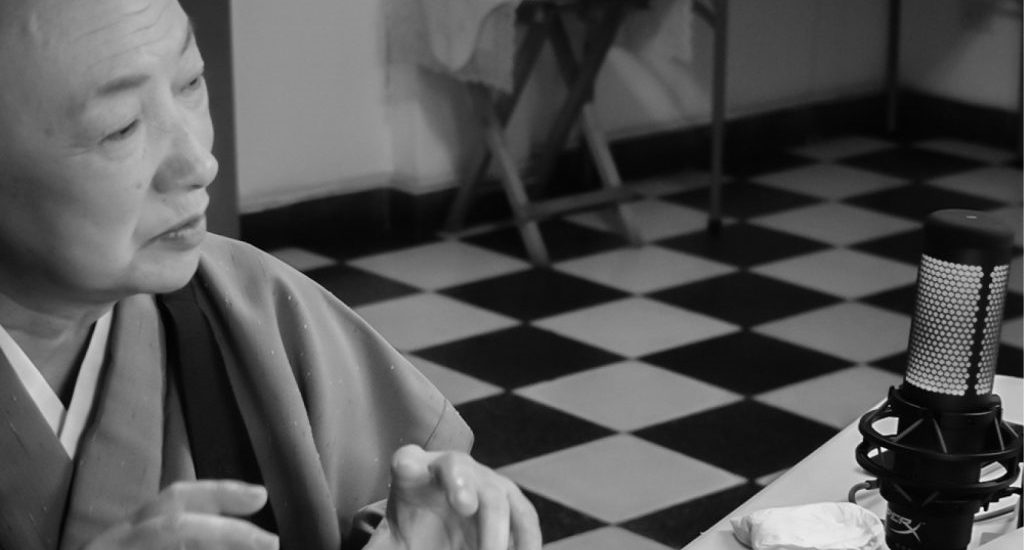In our last BDE highlights entry, I mentioned the name of Jisen Oshiro Roshi, a priest that has devoted her life to propagating the Dharma in Peru. Born in Argentina Roshi, affectionately known as Aurora, is a nikkei burajiru-jin. Born in Argentina in 1946, Roshi is a pillar of the Peruvian nikkei community as well as the broader diffusion of Japanese Buddhism in South America. She is an example of many faces that draws diverse people to her teachings: ordained and approved by the Soto Zen tradition to teach, a mother (her eldest son is also a priest), a nikkei and Argentinian at heart.
BDE contributor Fina Iñiguez and BDE editor Daniel Millet have put together two articles that not only tell Roshi’s story, but also that of her temple, Taiheizan Jion-ji. The first one is a comprehensive interview, Entrevista a la venerable Jisen Oshiro Roshi: «El zen es realmente una práctica de 24 horas, es la vida». The other is another interview and cover piece on her temple: El templo Taiheizan Jionji en Lima, Perú: el más antiguo de Latinoamérica.
Taiheizan Jion-ji is located in San Vicente de Cañete, in the province of Cañete, 140 kilometers from Lima. Taiheizan’s early years date back to the first Japanese immigrants at the beginning of the 20th century. It was founded in 1907, at the Hacienda Casa Blanca in Lima, where it remained until it was moved to its current location in the premises of the Peruvian-Japanese Association of Cañete in 1977. Roshi arrived in Peru in 2005 to assume responsibilities for Taiheizan. She not only officiates in Cañete, but also in Lima, Cusco, Trujillo, and more. In both enlightening and engaging conversations, the charismatic Roshi shared insightful observations about her ministry in the Peruvian and broader community.
“Today, nikkei culture is integrated into Peruvian society, and Taiheizan is visited not only by nikkeis but also by laypeople of non-Japanese descent seeking to learn Zen,” she told Fina and Daniel. “Today I have two groups: Zen meditation practitioners, and then the families who bring me the statuettes and burial tablets of their ancestors. They leave them here and we pray to them every day, and offer tea and incense.”
Roshi shares a closer-than-expected connection with Catholicism, the traditionally dominant religion of Peru after the Spanish Conquest. “The original nikkeis were actually Catholic, but there is now a subset of Japanese Peruvians called dekassei. A whole group of them went to Japan, which for all intents and purposes was a foreign country to them, but then discovered the traditional Japanese spirituality of Zen. They became in touch with their ancestral homeland. They returned to Peru, their religious interests fundamentally different to nikkeis that stayed here, staunchly Catholic.” For Roshi, both spiritual traditions must be rejected, and in her interviews with BDE and her anecdotes of her ministry, she often draws parallels between the shared experience of Buddhists and Catholics, and the common concerns of nikkeis and dekasseis. She has students of both Catholic and Buddhist affiliation, including some Catholic clergymen.
In her two interviews with us, she shares with us her personal journey as a woman of the cloth, and reveals insights into the Peruvian Zen situation that have been published nowhere else. Our writers will be watching the developments of Taiheizan, a more than century-long steward of Japanese Buddhism and Zen in the Peruvian community. Paradoxically, the movement to spread Zen is only just beginning, and is one of the newest religious movements in the country. Perhaps such a dual identity, reflecting Roshi’s own harmonized, distinctive selves, is in fact an advantage to its long term sustainability and success.


